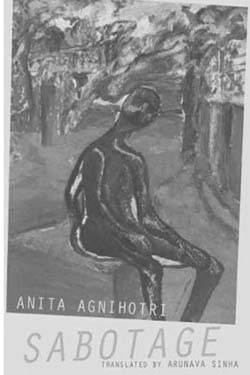Anita Agnihotri’s collection of short sto¬ries leaves one with a melancholic feel ing: something that occurs to every thinking individual while reading daily news¬papers, but she chooses to ignore. The book has 12 short stories. The contexts of these sto¬ries are all too familiar. Set in Bengal (except one), almost all of them tell stories of infra¬structure development: dams built, embank¬ments constructed, hydroelectric projects planned, terrorism countered, democracy up¬held. The sites of development are also many times the sites of conflict. But beyond the obvious conflict of development versus dis¬placement, Agnihotri’s lens relentlessly scans the background to focus on the invisible and innocuous, commenting on the human trag¬edy that is man-made and therefore, avoidable.
July 2015, volume 39, No 7

